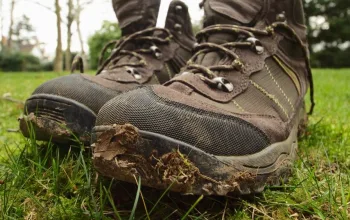Start planning! When and where to go
Weather to go, or not
One of the best things about the British weather is how quickly it can change. Which is good if it’s raining when you start walking but potentially dangerous on a remote, exposed mountain. Check the forecast regularly before you leave. The Met Office app is a great tool for this, giving detailed hourly weather and temperature forecasts. Free mountain-specific forecasts are also available on the web and at local information centres.
metoffice.gov.uk
Where to start
If you’re new to hill-walking, the best place to start is your nearest hilly National Park. There are 15 National Parks across the country from Dartmoor to Snowdonia, the Peak District, the Lake District and the Scottish Caingorms. Almost all have well-maintained footpaths as well as good signage and facilities for walking. Plan your route before you go and always give yourself a ‘bail out’ option.
nationalparks.uk
Get the skills! Learn how not to get lost
Navigation
The basic components of navigation are a map and compass. You can get a surprisingly decent plastic compass for well under £10, such as Blue Mountain’s classic compass (£4, cotswoldoutdoor.com). The most common UK walking maps are Ordnance Survey’s 1:25,000 scale and 1:50,000 scale maps but, especially for winter walking, also see Harvey’s British Mountain Maps which are waterproof and tear-resistant.
harveymaps.co.uk
Find yourself
Merely carrying a map and compass won’t stop you getting lost – you’ll also need to learn how to use both in conjunction with the landscape. The basics include aligning the vertical lines on the map with magnetic north so it’s the right way round, so you can compare it with what is in front of you. You’ll also need to become familiar with using contour lines and map symbols. For excellent free video and pdf guides on map reading, see ordnancesurvey.co.uk
Pack this! All the gear you’ll need
Get suited…
Layering is best when dressing for a hill walk, as you can put on and take off layers as conditions and your exertion levels change. Next to your skin should be a base-layer to keep your warmth in and wick sweat away from your skin. In winter a breathable mid layer such as a woolly jumper or fleece can come next, with an (ideally breathable) wind and waterproof jacket on top. Windproof trousers are well worth the investment.
…And booted
Don’t compromise on footwear: if your feet aren’t happy nor will you be. Look for ankle support for rough ground, heel moulding for comfort and efficiency, toe protection, water-resistance, and good grip on loose, wet, rocky surfaces.
In the bag
A small back pack can hold un-worn layers and other essentials. These include: a hat and gloves. A head torch – sooner or later everyone gets caught out after dark. And a mobile phone for real emergencies. A whistle is a good safety tool too: in an emergency use the international distress signal of six short blasts, repeated after a one-minute interval. Don’t forget water: at least two litres per day is a must, even in winter.
Five great hill walks for beginners
Pen y Fan, Brecon Beacons, Wales
There are walks of every level in these Welsh hills. But a wide, well-made track starting from the Storey Arms opens up this classic challenging, spectacular 4 mile route to beginners.
nationaltrust.org.uk
Fairfield Horseshoe, Lake District
Starting and finishing in Ambleside, this popular 11-mile walk in the heart of the Lakes is best done in good weather to make the best of the stunning views. Although not technical, this classic high-level route is still a long day, so be sure to leave enough light.
walkingbritain.co.uk
Ingleborough, Yorkshire Dales
This peak is one of Yorkshire’s renowned ‘three peaks’ – the other two are Whernside and Pen y Ghent. On a clear day this 9.5 mile walk gives panoramic views over the surrounding Pennines, the Lancashire coast and even the Lake District.
walkingenglishman.com
Conic Hill, Loch Lomond
Within easy reach of Glasgow, and rising above Balmaha, this hill sits on the divide between lowland and highland Scotland. Not just a dividing line, but an actual boundary fault that you can see from the summit, as it stretches across the loch and its islands below. You’ll also get great views of Ben Lomond and the Arrochar Alps on this 2.5-mile walk.
walkhighlands.co.uk
Box Hill, Surrey
Just outside London, the Surrey Hills are a popular walking and biking destination for a good reason. One of them is the four-mile Box Hill Juniper Top loop. Taking in some of Box Hill’s finest scenery and views, this four-mile walk is a cracker – but be prepared for some steep ups and downs.
nationaltrust.org.uk





















